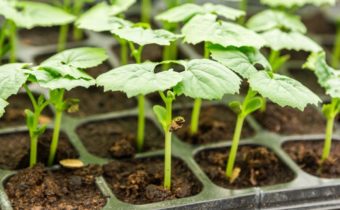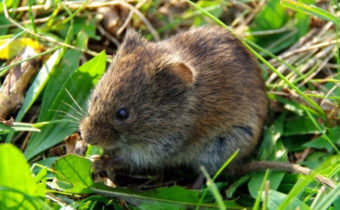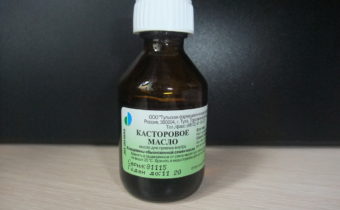Pomegranate from the stone at home
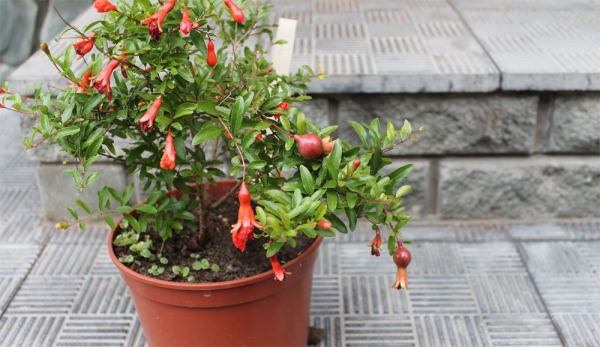
To pomegranate began to grow and bear fruit at home, you need to choose the planting material. If you want to go through the entire period of cultivation, then you need to start with the purchase of ripe fruit on the market. When you do not want to wait, you can speed up the process by buying hybrid seeds. Knowledge of the features of growing pomegranate will allow you to get a beautiful tree with large fruits.
Selection of seeds, planting in the substrate
Having bought a ripe and completely healthy pomegranate on the market, you can use it to grow an ornamental home plant. Most of the pomegranates sold on the market are grown from hybrids, so they are suitable for fruiting on a home window sill.
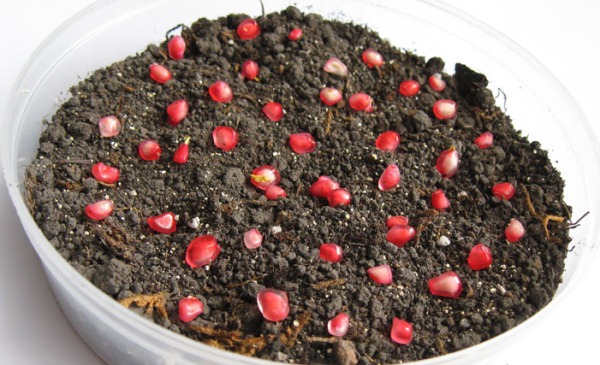
To speed up the growing process you can buy hybrid seeds in garden stores. You can plant a bone with a pomegranate. Seeds suitable for sowing are very firm to the touch and have a cream color. If the bones are soft and have a green or pale color, then they cannot be planted in the ground.
Seeds intended for planting should be soaked in water for at least 12 hours. When soaking, add 2-3 drops of Epin or Zircon to the water. Such drops will allow the plant to germinate faster. Seeds during germination must have access to oxygen.
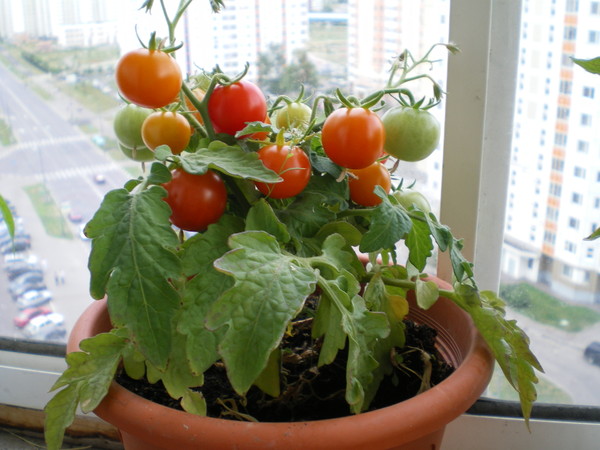
It is best to plant seeds in a universal substrate. Dried seeds are planted in a universal mixture for flowering plants to a depth of 10-15 mm. Planted bones watered with water, covered with glass and put on a sunny place.
100 grams of pomegranate contains 70 calories. The fruit is suitable for people on a diet.
Features of growing
Pomegranate seed will only sprout in loose soil. The composition should contain peat, nutritious soil and sand. It is best to plant seeds in the last weeks of February or in the first weeks of March. The tree will sprout in 15 days.
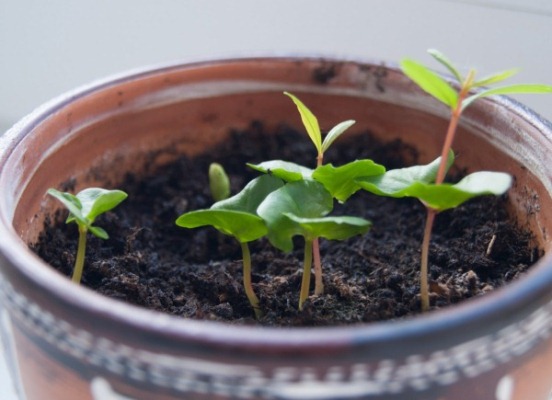
The plant feels comfortable at a temperature of 25 degrees. Soil mixture in a bitter periodically should be moistened with warm water from the sprayer. The room in which the tree grows must be aired.
When several shoots with leaves appear, they are seated in a bitter place. In the pot should be drainage, and the root is shortened by 1/3. The rays of the sun should illuminate the tree at least 2 hours a day. Light must be diffused. After the appearance of two pairs of leaf plates, the plant is clamped to stimulate the growth of side shoots.
When the tree has two tops and on each of them, three leaves of the plant pinch again. After such procedures, the plant will have many leaves and will look like a tree. The air temperature should be at that 20 degrees.
After 10 months, the tree begins the first flowering. In the autumn, the leaves of pomegranate fall off and the plant falls into a state of rest. The plant begins to rest, so watering is reduced, fertilizer stops, and the air temperature drops to 10 degrees. Rest lasts 1-2 months. After resting on the tree, a new sheet appears and the pomegranate becomes even more beautiful.
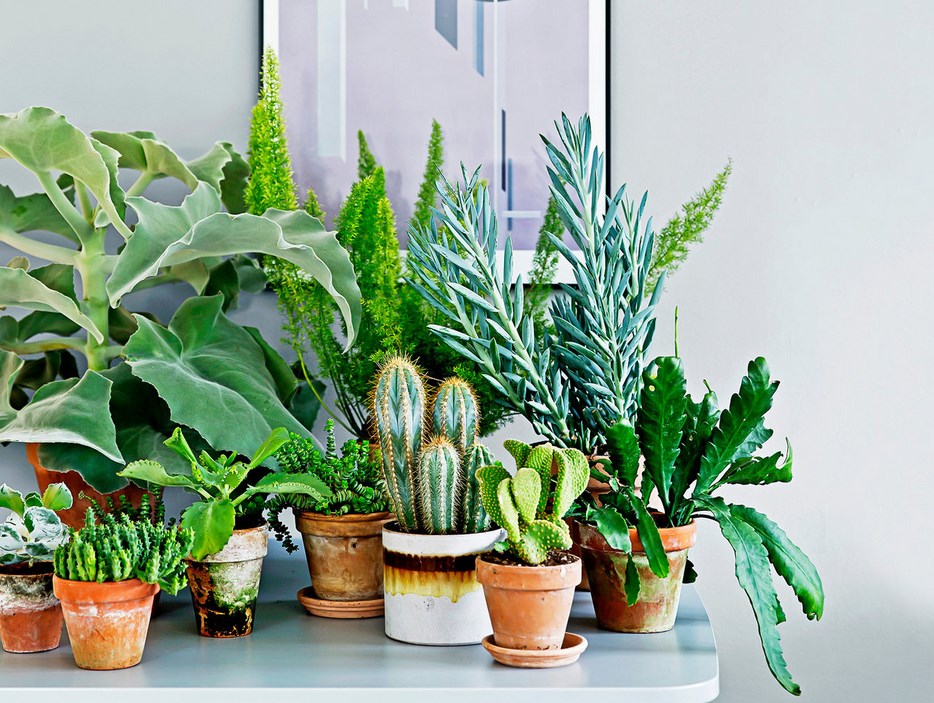
How to water
Watering plants in the period of development, fruiting, flowering abundant. Watering pomegranate should be 1-2 times in 7 days. If the tree is poured, then it will appear brown and yellow spots.
In winter, watering is significantly reduced, but it is observed that the soil does not dry out. In spring and autumn, the tree loves spraying 2 times a week. If the weather is very hot, you can spray the tree more often. In winter, spraying pomegranates does not need.
In Turkish coffee houses, pomegranate juice is sold as a strong aphrodisiac.
Fertilizer
From March to November, the plant requires mineral fertilization 2 times in 30 days. When the tree is at rest, there is no need to apply fertilizer. In addition to mineral, organic fertilizers can be used, for example, mullein. Organic fertilizers are used after watering. You can use mullein, litter.
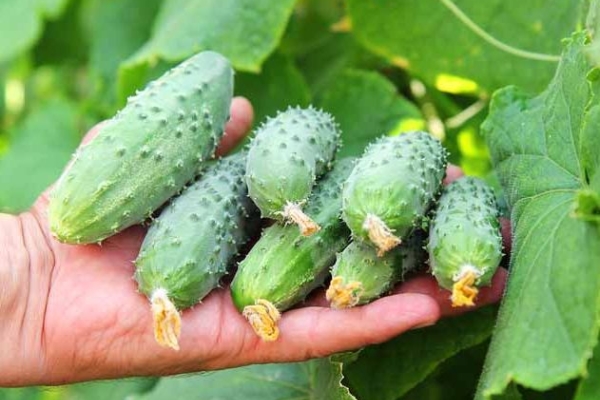
Pruning
A young plant within 6 months becomes a tree. To give the plant a beautiful shape you need to form the crown of the plant. There are 5-6 main branches on the plant and they are pruned. Forming the crown should be borne in mind that the formation of the fetus occurs on matured shoots last year.
If new growth grows quickly, then additional cutting of the branches is necessary.
Transfer
A pomegranate transplant takes place in late winter, early spring. A plant under the age of five years are transplanted annually. Next, once every three years. Pot increase as the formation of the plant.
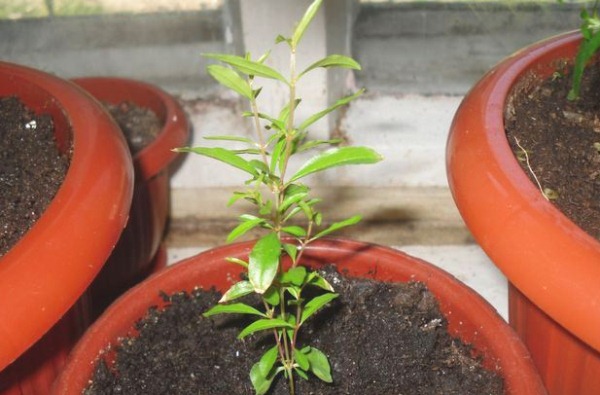
Drainage should be ¼ pot height. Transplanted plants by transfer. If the roots are damaged during transplantation, the place of damage is carefully pruned.
Fruiting at home
Flowering tree begins in April and ends in August. Flowers are pitcher-shaped and bell-shaped. Bell-shaped flowers of fruits do not form. On a tree only 10% of fruit bearing flowers are formed. Fruiting flowers live up to 10 days. Jug-shaped flowers fall quickly.
In autumn, after flowering, small fruits begin to form. The fruit is covered with a hard peel. There are seeds inside the fruit. The fruit of the houseplant is edible, but sour to the taste. Grenades do not have to be eaten, they are more suitable for decorating a room.
Conclusion
A pomegranate grows well at home, provided it is properly cared for. The plant loves diffused light, constant air temperature, abundant watering, fertilizer.
In winter, the tree needs to rest, and after hibernation the plant becomes stronger and more beautiful. House shrub can bear fruit. Fruits are sourish in taste, but do not bring any special benefit to the body.


